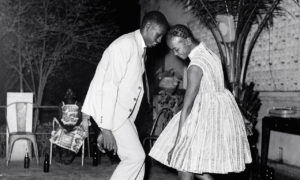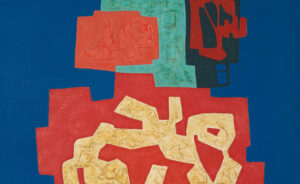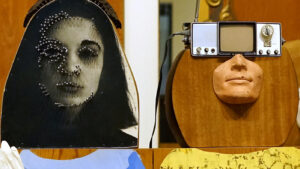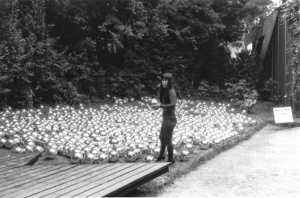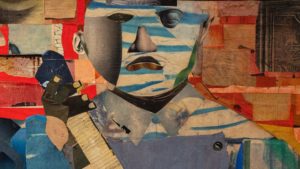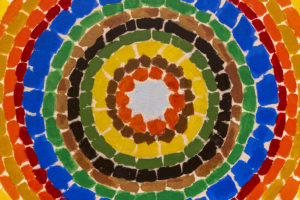Syllabus: Modern Art
HA231: Introduction to the history of modern art
Key questions and ideas
• Why do people study art history?
• The definition of art changes through time.
• The discipline of Art History is constantly changing.
• When did art history, as a discipline, first develop?
• What are the recent changes taking place in art history?
• Why should we be skeptical about what we see?
• What art gets remembered? What doesn’t get remembered?
Discussion question
Did the videos and readings for this unit help you see art history as relevant to your life and the time we live in? How so?
Key questions and ideas
• Describing what you see in words will help you interpret a work of art.
• Looking takes time, it helps to ask yourself questions while you look.
• When you look at a work of art, it’s helpful think about formal issues such as scale, composition, pictorial space, form, line, color, light, tone, texture, and pattern.
• How does identity impact the creation and reception of a work of art?
• How can you use iconography to understand a work of art?
• What is the difference between form and subject (and why form is so important)?
• How can art help us empathize with people from other times and places?
Discussion question
Describe a work of art
Review “Elements of Art” and “Principles of Composition”
and watch this video (again): How to do visual (formal) analysis
Chose one of the three works of art linked in the discussion area of the course itself. Find them in the LMS!
4. Anna Atkins, Dictyota atomaria, from Photographs of British Algae: Cyanotype Impressions, c. 1853
Key questions and ideas
• Naturalism, an image realistically rendered, is not Realism
• How do artists respond to the world around them?
• Can science aid art?
• What is meant by the words, “A Real Allegory”?
• Why did Manet paint so flatly?
• Could Morisot have painted Dr. Gross’s operating theater?
• Is Wendy Red Star’s works a type of Realism? What about Masquerade?
Discussion question
What did the word Realism mean to Courbet?
Key questions and ideas
• Did the meaning of nature and the countryside change with the growth of cities?
• What new systems of representation did artists develop to represent the modern city?
• In the mid 19th century, photographers and painters sought beauty in a place it had not been recognized before, in the city. Why did they look there?
• Urban life afforded ome new freedoms, but also restrictions. How were these conveyed by artists?
• Was photography viewed as art, as technology, or as a combination of the two in its early years?
Discussion question
Are there parallels with how the city and country were portrayed in the 19th century and your ideas of these places? What are those similarities and where are the distinctions?
Key questions and ideas
• Where do people look for the spiritual in the modern world? What role does art play?
• What is the place of tradition in a period of rapid change?
• How did colonialism, increased global trade, and technological developments impact traditions in art making?
• Does art function as a refuge from the chaos of modernity?
• Should we seek to recognize connections between works of unrelated cultures of the same century?
Discussion question
Does art function as a refuge from the chaos of modernity for you? Does photography, dance, design, painting, or any other form of art help you to slow down, to focus, and to step away from the rush daily life? If so, does that distance help you to better see the world around you?
Key questions and ideas
• Art often depicts the external world, what might prompts an artist to look inward instead?
• How is Post-Impressionism different from Impressionism?
• What makes Van Gogh’s Irises different from the work he had done in Paris?
• How is Cézanne’s Mont Sainte-Victoire reimaginging the representation of space?
• Can you find nature in the subway? How did Guimard and the Art Nouveau take inspiration from the natural world?
Discussion question
Can an inner truth be more valid or at least as valid as an externally perceived truth? Of the artworks discussed above, which strikes you as revealing significant truths? Please describe how it does this in some depth.
Key questions and ideas
• In what ways is Matisse’s Red Studio a self portrait?
• Is there a relationship between Kandinsky’s work and music?
• How does Picasso deal with the issue of representation in Still Life with Chair Caning?
• What social and political circumstances inform Höch’s, Cut with the Kitchen Knife…?
• Why does Duchamp seek to harness both intention and chance?
• Why does Hu Yichuan use woodcut?
• How does Amrita Sher-Gil reverse Gauguin’s construction of the exotic other?
Discussion question
Why does Picasso include a fragment of oilcloth printed with the pattern of chair caning in his painting?
Key questions and ideas
• How have artists expressed the stresses of living under prejudice, repression, and war?
• What was the role of art and architecture in National Socialist ideology?
• What is the moral responsibility of the viewer when viewing art that celebrates dictatorship?
• What is Surrealism?
• Does the meaning of self portraiture change during during war?
• Why was the dream of interest to Max Ernst and to other Surrealists?
• Why did mural painting become important in Mexico?
Discussion question
In 1936, Alfred H. Barr Jr., the founding director of The Museum of Modern Art, mounted that museum’s first major exhibition of European modernism with a show titled, “Cubism and Abstract Art.” Barr had spent months travelling through Europe learning about and borrowing works of art in styles Americans had never seen or even heard about. There was a dizzying number of styles or “isms” as they were sometime referred to. In order to help make these many “isms” more understandable, Barr drew up a chart or timeline, a family tree of sorts, that he published on the dust jacket of the catalogue to the exhibition.
See the diagram here
Your assignment is to spend some time analyzing this chart, understanding it. I would like to know, based on what you have learned in this class, which aspects of the diagram make sense to you and which seem to be misleading or problematic in some way. Then take it one step further and draw a diagram of the key figures and styles in your discipline or an area of creativity you are deeply interested in. Have it cover at least the past 20 years. Then upload it. I can’t wait to see!
Key questions and ideas
• What are some of the formal issues that Hepworth’s sculpture addresses?
• How has Gordon Park’s partnership with Ralph Ellison impacted his Harlem project?
• What is Abstract Expressionism?
• Pollock and Mitchell’s abstraction invites us to reimagine how we find meaning in art, what are some of the ways we might find meaning in this work?
• In what ways has music impacted the visual arts in the modern era?
• What are some of the innovations found in the work of Sari Dienes and Hedda Sterne? Why are they less well known than Jackson Pollock?
• How is the magical imagery of Skunder Boghossian’s, Night Flight of Dread and Delight relevant to his aspiration for post-colonial Africa?
Discussion question
How is the work discussed above a product of the postwar period? Could it have been produced in another era?
Key questions and ideas
• What is cultural heritage?
• How has cultural heritage been endangered?
• Should art historians privilege one historical aspect of a work of art or architecture if it has changed over time?
• If you owned a building, should you be able to tear it down to build another? What if the original was irreplaceable?
• Does the story behind the painting Portrait of Wally change the way you view it?
• Can the act of erasing art itself be art?
• What is NAGPRA?
• Can you think of artwork that is meant to be temporary?
Discussion question
So much art history is focused on the artist and the time when a work of art was made. But art’s circumstances can change after the work is completed. In this section we’ve been looking at histories of works of art and architecture after they were completed, what has happened to them over time. Do you think an artist fixes the the meaning of a work, or can the meaning of a work of art change or accrue over time? Please discuss and give examples.
Key questions and ideas
• Can architecture be emotionally expressive in the ways that other arts can be?
• How has the meaning of the architecture of Chhatrapati Shivaji Terminus changed in the post-colonial era?
• Can you related the meaning of the motto of the Secession to Olbrich’s architectural choices?
• What challenges did Sullivan face on Bleecker Street?
• How does the Great Mosque of Djenné combine traditional mosque architectural elements with the environment of Mali?
• How has the Bauhaus impacted Tel Aviv?
• How has the Bauhaus impacted East 52nd Street in New York City?
• Was the International Style actually International?
Discussion question
Discuss, in some depth, one example of modern architecture near where you live. Be sure to offer a detailed visual description.
Key questions and ideas
• What is Pop Art?
• It is easy to dismiss Pop as fun and light but what serious issues are addressed?
• How did art change between the mid 19th and mid 20th centuries?
• Are there also common aspects in the art of the 19th and 20th centuries?
• What is modern art?
Discussion question
If mass media, television, radio, magazines, newspapers, comics, etc. powered Pop in the 1960s, what is the impact of social media and AI on art now?
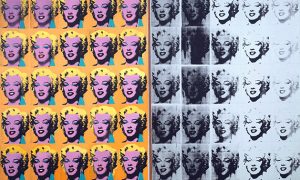
Marilyn Diptych 1962 Andy Warhol 1928-1987 (Tate)
-
1.Why you don’t like art history
-
2.What is art history and where is it going?
-
3.Must art be beautiful?
-
4.Art and empathy
-
5.Guerrilla Girls, ‘You Have to Question What You See’ (interview)
-
6.Omar Victor Diop: Black subjects in the frame
-
7.Jacques-Louis David, The Death of Socrates, 1787
-
8.Ren Xiong, Self-Portrait
-
9.Painting in Mithila, an introduction
-
10.Kehinde Wiley, Rumors of War
Key questions and ideas
• Why do people study art history?
• The definition of art changes through time.
• The discipline of Art History is constantly changing.
• When did art history, as a discipline, first develop?
• What are the recent changes taking place in art history?
• Why should we be skeptical about what we see?
• What art gets remembered? What doesn’t get remembered?
Discussion question
Did the videos and readings for this unit help you see art history as relevant to your life and the time we live in? How so?
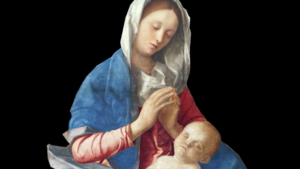
Giovanni Bellini, Madonna of the Meadow, c. 1500
-
1.How to do visual (formal) analysis
-
2.Introduction to art historical analysis
-
3.Art historical analysis with Goya’s Third of May, 1808
-
4.An introduction to iconography and iconographic analysis
-
5.Describing what you see: Sculpture, Henry Moore’s Reclining Figure
-
6.Portrait of Yi Chae, 1802 (Joseon Dynasty)
-
7.Théodore Géricault, Raft of the Medusa, 1818–19
-
8.Eugène Delacroix, Liberty Leading the People (July 28, 1830)
-
9.The Radical Floriography of Sarah Mapps Douglass, 1836–37
-
10.José María Velasco, The Valley of Mexico from the Santa Isabel Mountain Range, 1875
Key questions and ideas
• Describing what you see in words will help you interpret a work of art.
• Looking takes time, it helps to ask yourself questions while you look.
• When you look at a work of art, it’s helpful think about formal issues such as scale, composition, pictorial space, form, line, color, light, tone, texture, and pattern.
• How does identity impact the creation and reception of a work of art?
• How can you use iconography to understand a work of art?
• What is the difference between form and subject (and why form is so important)?
• How can art help us empathize with people from other times and places?
Discussion question
Describe a work of art
Review “Elements of Art” and “Principles of Composition”
and watch this video (again): How to do visual (formal) analysis
Chose one of the three works of art linked in the discussion area of the course itself. Find them in the LMS!
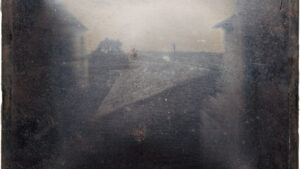
Joseph Nicéphore Niépce, View from the Window at Le Gras, c. 1826–27, heliograph on pewter, 6.57 x 8 inches (Harry Ransom Center, Austin)
-
1.Joseph Nicéphore Niépce, View from the Window at Le Gras, 1826–27
-
2 .David Drake (Lewis J. Miles Factory, Horse Creek Valley, Edgefield District, South Carolina), 1840
-
3.Sir John Everett Millais, Isabella, 1849
-
4.Anna Atkins, Dictyota atomaria, from Photographs of British Algae: Cyanotype Impressions, c. 1853
-
5.Gustave Courbet, The Painter’s Studio: A Real Allegory Summing Up Seven Years of My Life as an Artist, 1854-55
-
6.Édouard Manet, Olympia, 1863
-
7.Julia Margaret Cameron, Mrs. Herbert Duckworth, 1867
-
8.Berthe Morisot, The Cradle, 1872
-
9.Wendy Red Star, 1880 Crow Peace Delegation
-
10.Masquerade basics
Key questions and ideas
• Naturalism, an image realistically rendered, is not Realism
• How do artists respond to the world around them?
• Can science aid art?
• What is meant by the words, “A Real Allegory”?
• Why did Manet paint so flatly?
• Could Morisot have painted Dr. Gross’s operating theater?
• Is Wendy Red Star’s works a type of Realism? What about Masquerade?
Discussion question
What did the word Realism mean to Courbet?
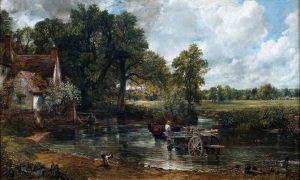
John Constable, The Hay Wain (Landscape: Noon), 1821, oil on canvas, 130.2 x 185.4 cm (The National Gallery, London)
-
1.John Constable, The Hay Wain (Landscape: Noon), 1821
-
2.Rosa Bonheur, Plowing in the Nivernais (or The First Dressing), 1849
-
3.Seneca Village, 1825–53, just east of Central Park West between 81st and 89th Streets, Manhattan
-
4.Ford Madox Brown, Work, 1852–65
-
5.Emily Mary Osborn, Nameless and Friendless, 1857
-
6.Mundurukú Headdress, before 1869, Brazil
-
7.Pierre-Auguste Renoir, Moulin de la Galette, 1876
-
8.Claude Monet, The Gare Saint-Lazare (or Interior View of the Gare Saint-Lazare, the Auteuil Line), 1877
-
9.Gustave Caillebotte, Paris Street; Rainy Day, 1877
-
10.Mary Cassatt, In the Loge, 1878
Key questions and ideas
• Did the meaning of nature and the countryside change with the growth of cities?
• What new systems of representation did artists develop to represent the modern city?
• In the mid 19th century, photographers and painters sought beauty in a place it had not been recognized before, in the city. Why did they look there?
• Urban life afforded ome new freedoms, but also restrictions. How were these conveyed by artists?
• Was photography viewed as art, as technology, or as a combination of the two in its early years?
Discussion question
Are there parallels with how the city and country were portrayed in the 19th century and your ideas of these places? What are those similarities and where are the distinctions?
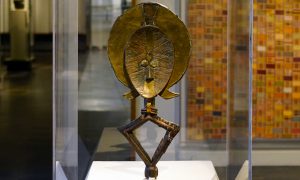
Kota reliquary figure (mbulu ngulu), late 19th to early 20th century, Gabon, wood, copper, brass, and bone, 59.69 cm high (Museum of Fine Arts, Boston)
-
1.Kota reliquary (mbulu ngulu)
-
2.Caspar David Friedrich, Monk by the Sea, 1808
-
3.The Whale Rider
-
4.Edmonia Lewis, Forever Free, 1867
-
5.Eugène Delacroix, Murals in the Chapel of The Holy Angels, Saint-Sulpice, 1861
-
6.Retablo of La Mano Poderosa/The All Powerful Hand
-
7.Hokusai, Fisherman and Woodcutter, 1849
-
8.Bear Claw Necklace (Pawnee), before 1870
-
9.Chinese export silver, a 19th-century Torah case, 1886
-
10.Power Figure: Male (Nkisi), 19th-mid 20th century, Kongo peoples
Key questions and ideas
• Where do people look for the spiritual in the modern world? What role does art play?
• What is the place of tradition in a period of rapid change?
• How did colonialism, increased global trade, and technological developments impact traditions in art making?
• Does art function as a refuge from the chaos of modernity?
• Should we seek to recognize connections between works of unrelated cultures of the same century?
Discussion question
Does art function as a refuge from the chaos of modernity for you? Does photography, dance, design, painting, or any other form of art help you to slow down, to focus, and to step away from the rush daily life? If so, does that distance help you to better see the world around you?
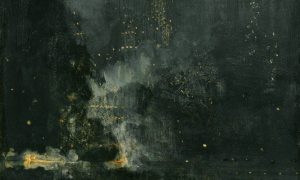
James Abbott McNeill Whistler, Nocturne in Black and Gold, the Falling Rocket, 1875, oil on panel, 60.3 × 46.7 cm (Detroit Institute of Arts)
-
1.James Abbott McNeill Whistler, Nocturne in Black and Gold, the Falling Rocket, 1875
-
2.Paul Gauguin, Self-Portrait with Portrait of Émile Bernard (Les misérables), 1888
-
3.Vincent van Gogh, Irises, 1889
-
4.Raja Ravi Varma, A Galaxy of Musicians, 1889
-
5.Gustave Moreau, Jupiter and Semele, 1894–95
-
6.Auguste Rodin, The Gates of Hell, 1880-1917
-
7.Broncia Koller, Sitting (Seated Nude Marietta), 1907
-
8.Paul Cézanne, Mont Sainte-Victoire, 1902-04
-
9.Gustav Klimt, Beethoven Frieze, 1902
-
10.The Wiener Werkstätte, begun 1897
Key questions and ideas
• Art often depicts the external world, what might prompts an artist to look inward instead?
• How is Post-Impressionism different from Impressionism?
• What makes Van Gogh’s Irises different from the work he had done in Paris?
• How is Cézanne’s Mont Sainte-Victoire reimaginging the representation of space?
• Can you find nature in the subway? How did Guimard and the Art Nouveau take inspiration from the natural world?
Discussion question
Can an inner truth be more valid or at least as valid as an externally perceived truth? Of the artworks discussed above, which strikes you as revealing significant truths? Please describe how it does this in some depth.
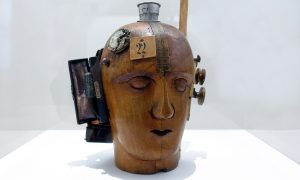
Raoul Hausmann, Spirit of the Age: Mechanical Head, 1919, wooden mannequin head with attached objects, 32.5 x 21 x 20 cm (Centre Pompidou, Musée National d’Art Moderne, Paris)
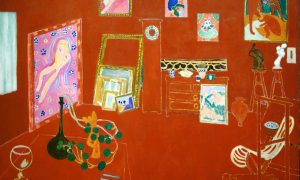
Henri Matisse, The Red Studio, 1911, oil on canvas, 181 x 219.1 cm (Museum of Modern Art, New York)
-
1.Henri Matisse, The Red Studio, 1911
-
2.Pablo Picasso, Still Life with Chair Caning, 1912
-
3.Constantin Brancusi, The Kiss, 1916
-
4.Kazimir Malevich, Suprematist Composition: White on White, 1918
-
5.Hannah Höch, Cut with the Kitchen Knife Dada through the Last Weimar Beer-Belly Cultural Epoch in Germany, 1919
-
6.Marcel Duchamp, The Bride Stripped Bare by Her Bachelors, Even (The Large Glass), 1915-23
-
7.Florine Stettheimer, Portrait of Alfred Stieglitz, 1928
-
8.Tarsila do Amaral, Abaporú, 1928
-
9.Hu Yichuan, To the Front!, 1932
-
10.Amrita Sher-Gil, Self-Portrait as a Tahitian, 1934
Key questions and ideas
• In what ways is Matisse’s Red Studio a self portrait?
• Is there a relationship between Kandinsky’s work and music?
• How does Picasso deal with the issue of representation in Still Life with Chair Caning?
• What social and political circumstances inform Höch’s, Cut with the Kitchen Knife…?
• Why does Duchamp seek to harness both intention and chance?
• Why does Hu Yichuan use woodcut?
• How does Amrita Sher-Gil reverse Gauguin’s construction of the exotic other?
Discussion question
Why does Picasso include a fragment of oilcloth printed with the pattern of chair caning in his painting?
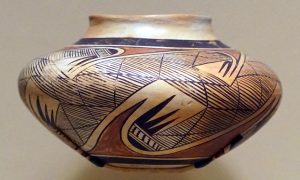
Nampeyo (Hopi-Tewa), polychrome jar, c. 1930s, clay and pigment, 13 x 21 cm (National Museum of the American Indian, Smithsonian Institution)
-
1.Nampeyo (Hopi-Tewa), polychrome jar, c. 1930s
-
2.Torres-García, Composition, 1931
-
3.Paul Troost, House of German Art, Munich, 1933-37
-
4.Aaron Douglas, Aspiration, 1936
-
5.Diego Rivera, Man Controller of the Universe (or Man in the Time Machine), 1934
-
6.Lang Jingshan 郎静山, Spring Trees and Majestic Peaks 春樹奇峰, c. 1934
-
7.Meret Oppenheim, Object, 1936
-
8.George Grosz, Remembering, 1937
-
9.Frida Kahlo, The Two Fridas (Las dos Fridas), 1939
-
10.Amelia Peláez Del Casal, Fishes, 1943
Key questions and ideas
• How have artists expressed the stresses of living under prejudice, repression, and war?
• What was the role of art and architecture in National Socialist ideology?
• What is the moral responsibility of the viewer when viewing art that celebrates dictatorship?
• What is Surrealism?
• Does the meaning of self portraiture change during during war?
• Why was the dream of interest to Max Ernst and to other Surrealists?
• Why did mural painting become important in Mexico?
Discussion question
In 1936, Alfred H. Barr Jr., the founding director of The Museum of Modern Art, mounted that museum’s first major exhibition of European modernism with a show titled, “Cubism and Abstract Art.” Barr had spent months travelling through Europe learning about and borrowing works of art in styles Americans had never seen or even heard about. There was a dizzying number of styles or “isms” as they were sometime referred to. In order to help make these many “isms” more understandable, Barr drew up a chart or timeline, a family tree of sorts, that he published on the dust jacket of the catalogue to the exhibition.
See the diagram here
Your assignment is to spend some time analyzing this chart, understanding it. I would like to know, based on what you have learned in this class, which aspects of the diagram make sense to you and which seem to be misleading or problematic in some way. Then take it one step further and draw a diagram of the key figures and styles in your discipline or an area of creativity you are deeply interested in. Have it cover at least the past 20 years. Then upload it. I can’t wait to see!
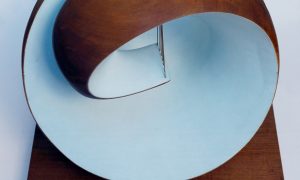
Dame Barbara Hepworth, Pelagos, 1946, elm and string on oak base, 43 x 46 x 38.5 cm (Tate Britain)
-
1.Dame Barbara Hepworth, Pelagos, 1946,
-
2.Gordon Parks, Off on My Own (Harlem, New York), 1948
-
3.Jackson Pollock, Autumn Rhythm (Number 30), 1950
-
4.Rafael Tufiño, La Plena, 1952–54
-
5.Sari Dienes, Star Circle, 1953–59 (assembled as late as 1959)
-
6.Joan Mitchell, City Landscape, 1955
-
7.Hedda Sterne, Number 3–1957, 1957
-
8.Lygia Clark, Bicho (Critter), 1962
-
9.Skunder (Alexander) Boghossian, Night Flight of Dread and Delight, 1964
-
10.Gerhard Richter, Uncle Rudi, 1965
Key questions and ideas
• What are some of the formal issues that Hepworth’s sculpture addresses?
• How has Gordon Park’s partnership with Ralph Ellison impacted his Harlem project?
• What is Abstract Expressionism?
• Pollock and Mitchell’s abstraction invites us to reimagine how we find meaning in art, what are some of the ways we might find meaning in this work?
• In what ways has music impacted the visual arts in the modern era?
• What are some of the innovations found in the work of Sari Dienes and Hedda Sterne? Why are they less well known than Jackson Pollock?
• How is the magical imagery of Skunder Boghossian’s, Night Flight of Dread and Delight relevant to his aspiration for post-colonial Africa?
Discussion question
How is the work discussed above a product of the postwar period? Could it have been produced in another era?
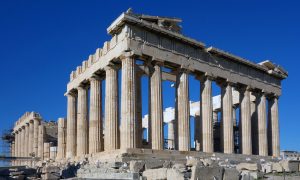
Iktinos and Kallikrates, Parthenon, Acropolis, Athens, 447–432 B.C.E.
-
1.Destruction, Memory, and Monuments: The Many Lives of the Parthenon
-
2.Blow it up: cultural heritage and film
-
3.Fact and fiction: Reims Cathedral during World War I
-
4.Egon Schiele, Portrait of Wally Neuzil, 1912
-
5.A Landmark Decision: Penn Station, Grand Central, and the architectural heritage of NYC
-
6.Erasing Art: Rauschenberg’s Erased de Kooning drawing
-
7.Ai Weiwei, Dropping a Han Dynasty Urn, 1995 (printed 2017)
-
8.Mesa Verde and the preservation of Ancestral Puebloan heritage
-
9.Moai of Rapa Nui (Easter Island), Waka Tapu, and the reclaiming of cultural heritage
-
10.Submerged, burned, and scattered: celebrating the destruction of objects in South Asia
Key questions and ideas
• What is cultural heritage?
• How has cultural heritage been endangered?
• Should art historians privilege one historical aspect of a work of art or architecture if it has changed over time?
• If you owned a building, should you be able to tear it down to build another? What if the original was irreplaceable?
• Does the story behind the painting Portrait of Wally change the way you view it?
• Can the act of erasing art itself be art?
• What is NAGPRA?
• Can you think of artwork that is meant to be temporary?
Discussion question
So much art history is focused on the artist and the time when a work of art was made. But art’s circumstances can change after the work is completed. In this section we’ve been looking at histories of works of art and architecture after they were completed, what has happened to them over time. Do you think an artist fixes the the meaning of a work, or can the meaning of a work of art change or accrue over time? Please discuss and give examples.
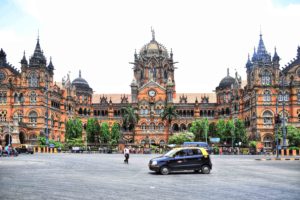
F.W. Stevens with Sitaram Khanderao and Madherao Janardhan, Chhatrapati Shivaji Terminus (formerly Victoria Terminus), begun 1878, Mumbai, India (photo: Ajit A. Kenjale, CC BY-SA 4.0)
-
1.F.W. Stevens with Sitaram Khanderao and Madherao Janardhan, Chhatrapati Shivaji Terminus, 1878
-
2.Josef Maria Olbrich, Secession Building, Vienna 1897–98
-
3.Louis Sullivan, Bayard-Condict Building, 1897–99
-
4.Great Mosque of Djenné, 1907
-
5.Le Corbusier, Villa Savoye, 1929
-
6.The White City of Tel Aviv
-
7.Anni Albers curtains, Rockefeller Guest House, 1944
-
8.International Style architecture in Mexico and Brazil
-
9.Lola Álvarez Bravo, Anarquía Arquitectónica en la Ciudad de México (Architectural Anarchy in Mexico City), 1954
-
10.Ludwig Mies van der Rohe, Seagram Building, 1956–58
Key questions and ideas
• Can architecture be emotionally expressive in the ways that other arts can be?
• How has the meaning of the architecture of Chhatrapati Shivaji Terminus changed in the post-colonial era?
• Can you related the meaning of the motto of the Secession to Olbrich’s architectural choices?
• What challenges did Sullivan face on Bleecker Street?
• How does the Great Mosque of Djenné combine traditional mosque architectural elements with the environment of Mali?
• How has the Bauhaus impacted Tel Aviv?
• How has the Bauhaus impacted East 52nd Street in New York City?
• Was the International Style actually International?
Discussion question
Discuss, in some depth, one example of modern architecture near where you live. Be sure to offer a detailed visual description.
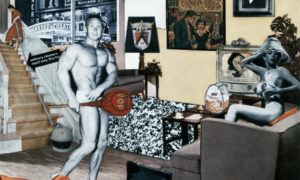
Richard Hamilton, Just What is It That Makes Today’s Homes So Different, so Appealing?, 1956, collage, 26 cm × 24.8 cm (Kunsthalle Tübingen, Tübingen)
-
1.Richard Hamilton, Just What is It That Makes Today’s Homes So Different, so Appealing?, 1956
-
2.Garry Winogrand, Democratic National Convention, Los Angeles, 1960
-
3.Ibrahim El-Salahi, Reborn Sounds of Childhood Dreams, 1961-65
-
4.Warhol, Coca-Cola [3], 1962
-
5.Malick Sidibé, Nuit de Noël (Happy Couple), 1963
-
6.Mahmoud Hammad, Arabic Writing no. 11, 1965
-
7.Marisol Escobar, The Party, 1965-66
-
8.Yayoi Kusama, Narcissus Garden, 1966
-
9.Romare Bearden, Three Folk Musicians, 1967
-
10.Alma Thomas, Lunar Rendezvous—Circle of Flowers, 1969
Key questions and ideas
• What is Pop Art?
• It is easy to dismiss Pop as fun and light but what serious issues are addressed?
• How did art change between the mid 19th and mid 20th centuries?
• Are there also common aspects in the art of the 19th and 20th centuries?
• What is modern art?
Discussion question
If mass media, television, radio, magazines, newspapers, comics, etc. powered Pop in the 1960s, what is the impact of social media and AI on art now?

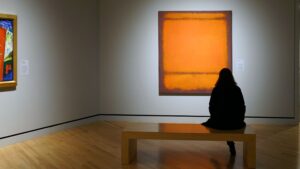
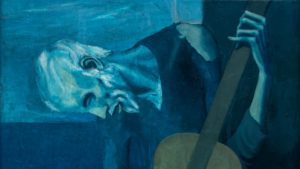
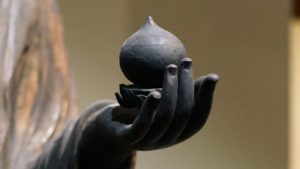
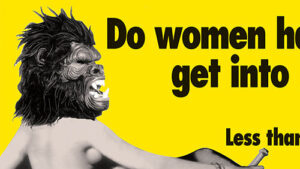
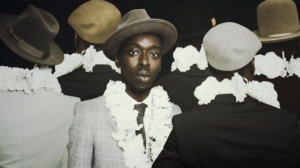
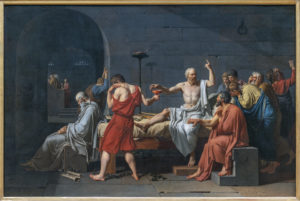
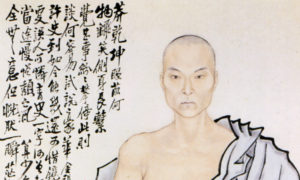
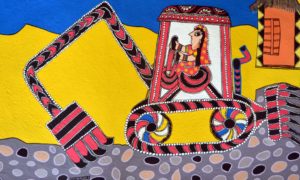
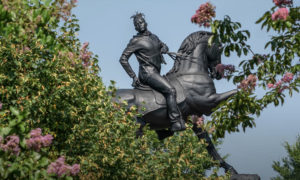
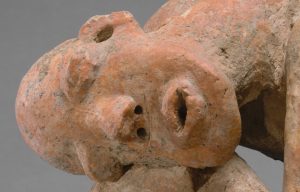
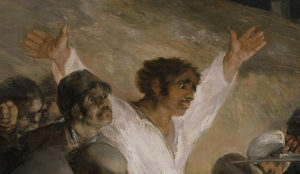
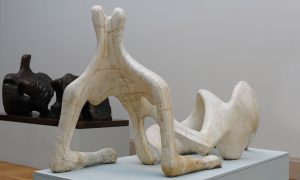
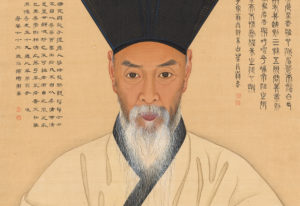
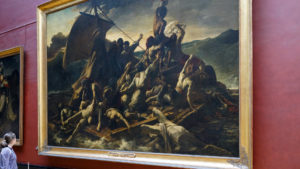
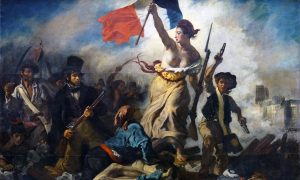
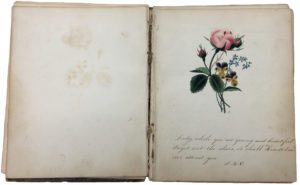
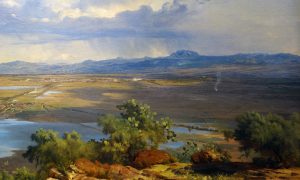
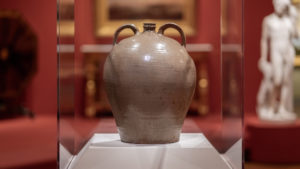
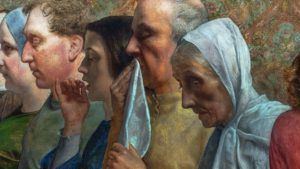
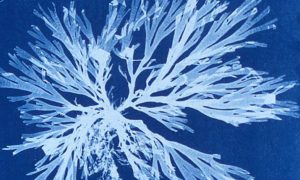
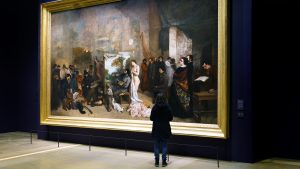
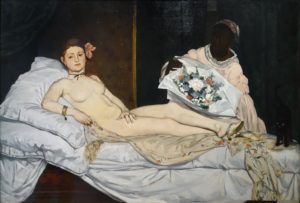
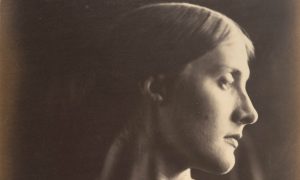
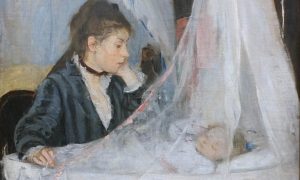
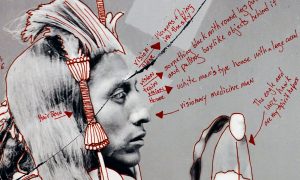
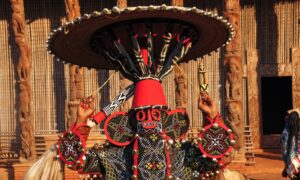
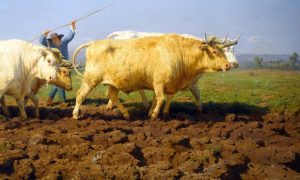
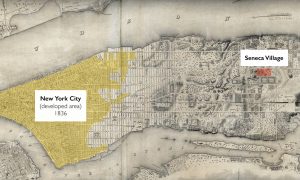
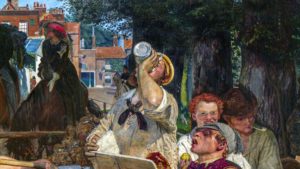
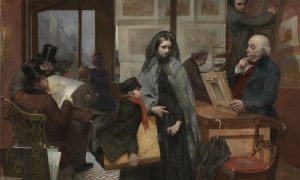
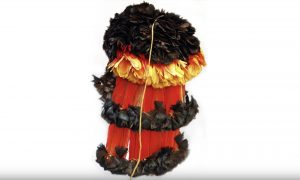
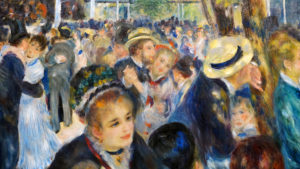
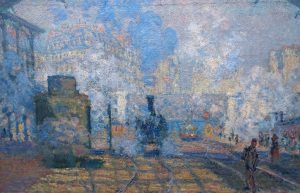
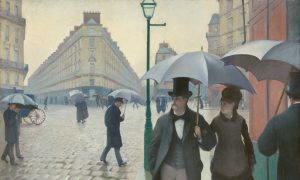
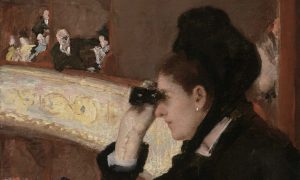
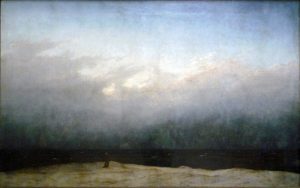
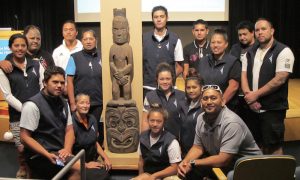

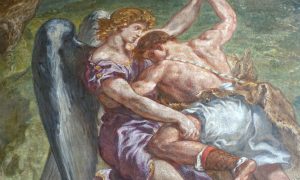
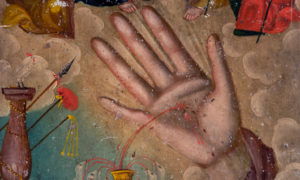
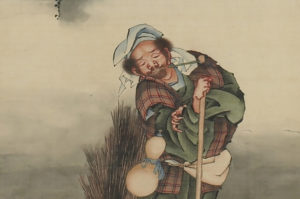
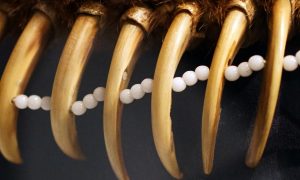
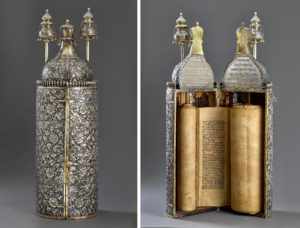
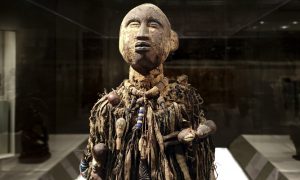
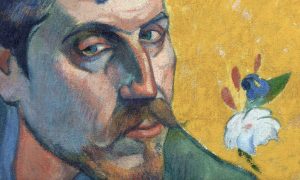

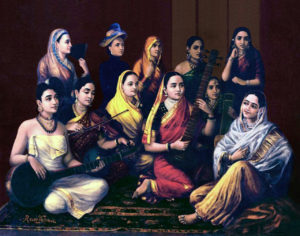
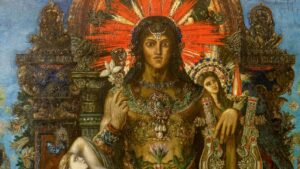
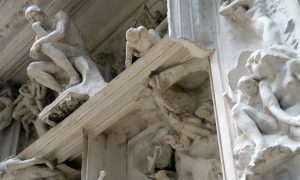
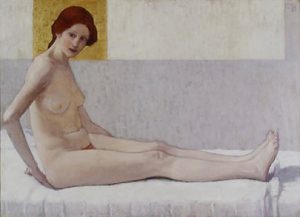
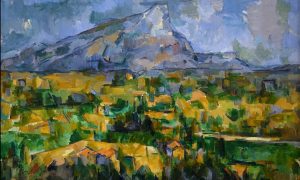
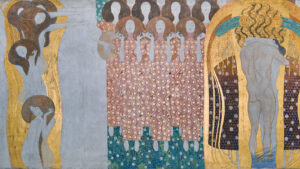
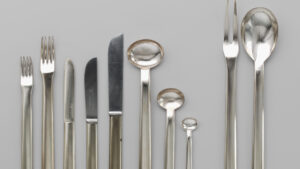
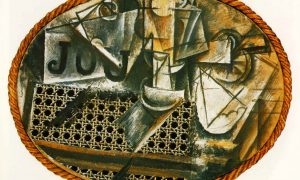
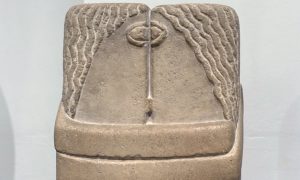
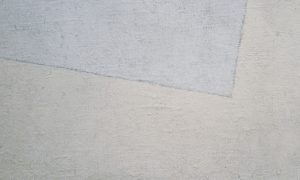
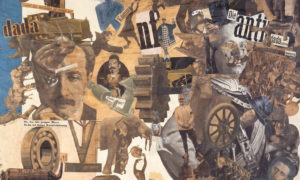
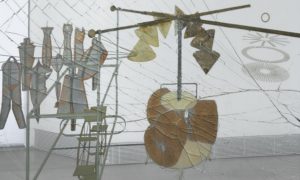
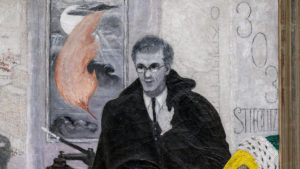
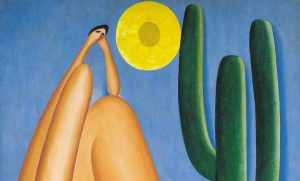
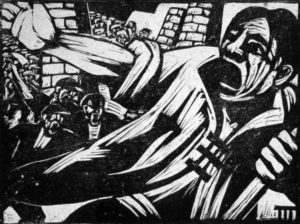
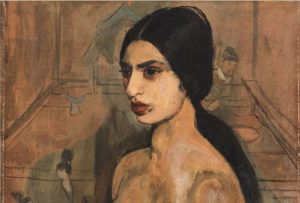
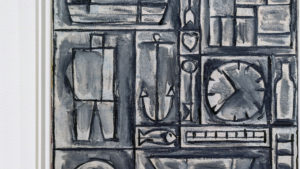
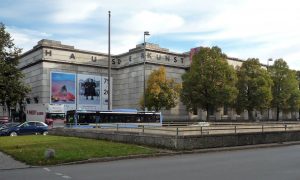
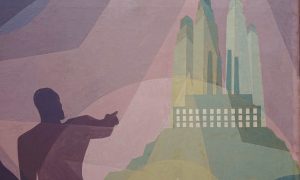
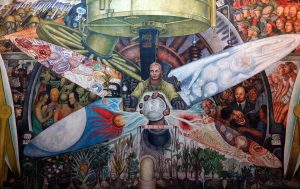
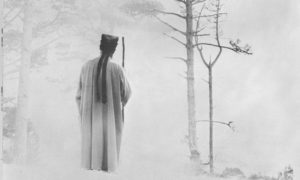
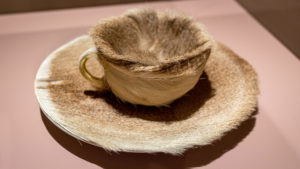
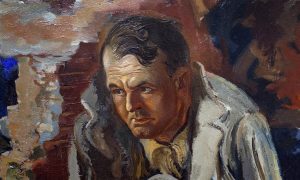
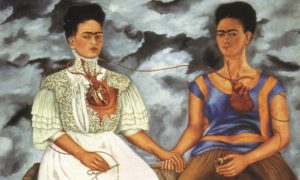
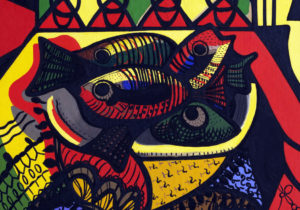
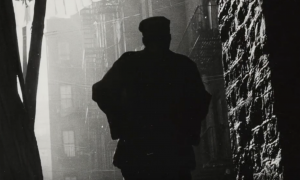
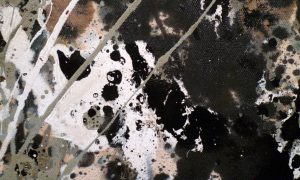
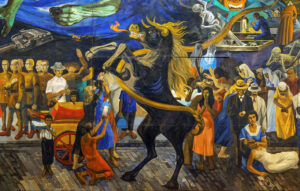
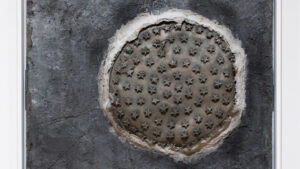
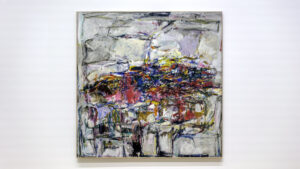
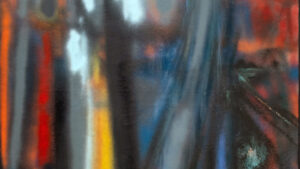
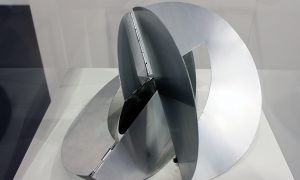
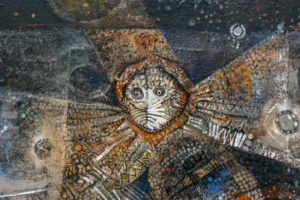
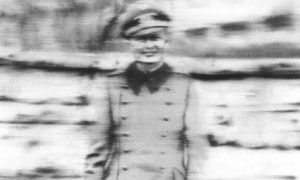
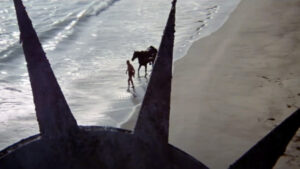
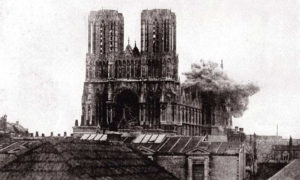
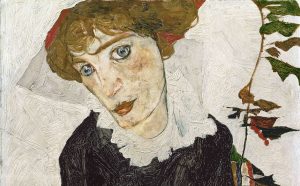
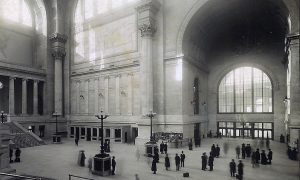
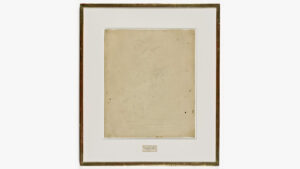
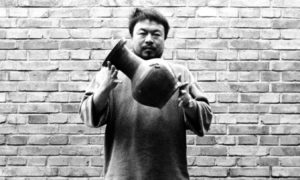
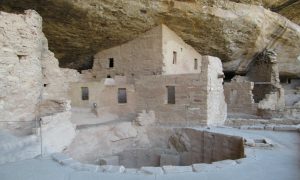
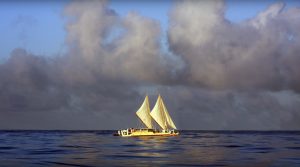
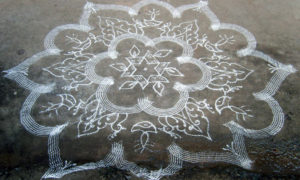
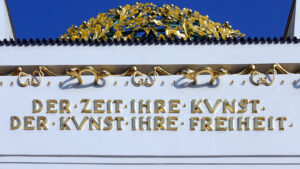
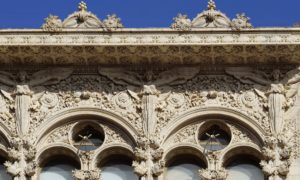
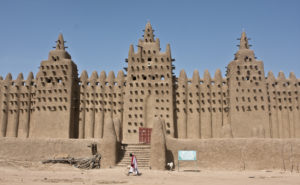
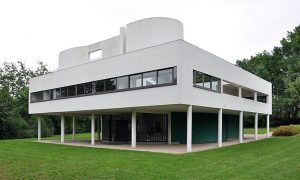
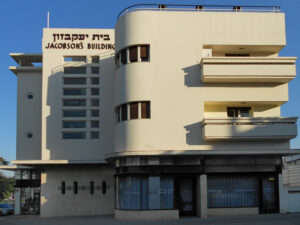
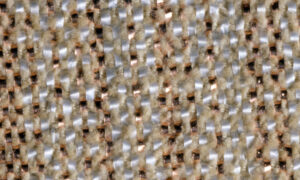
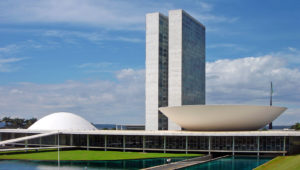
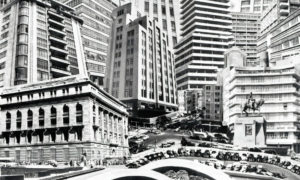
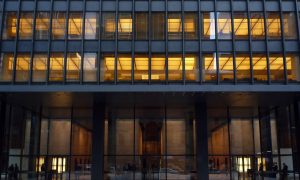
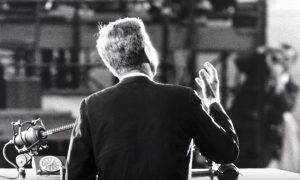
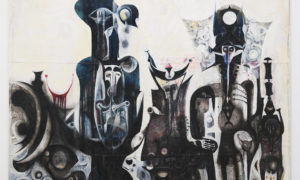
![Andy Warhol, Coca-Cola [3], 1962, casein on canvas, 176.2 x 137.2 cm (Crystal Bridges Museum of American Art, © The Andy Warhol Foundation for the Visual Arts)](https://smarthistory.org/wp-content/uploads/2020/05/warhol-300x180.jpg)
